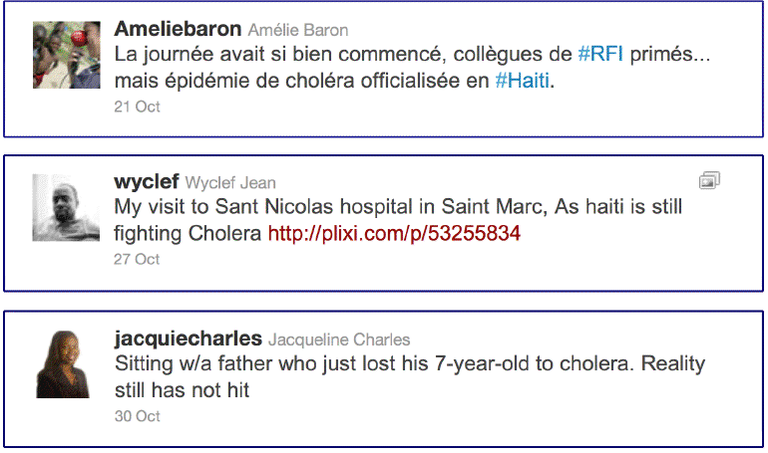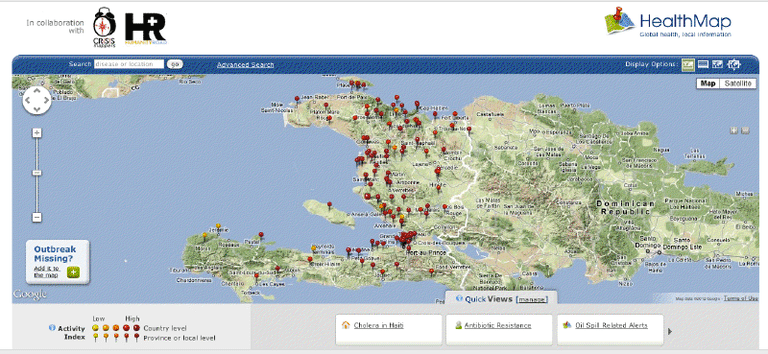Advertisement
How Twitter, Social Media Helped Detect Cholera In Haiti

The cholera epidemic has now killed nearly 7,000 people and sickened almost half a million.
The social media study, part of a special Haiti-themed issue of the American Journal of Tropical Medicine and Hygiene, is characterized in a news release as "the first to demonstrate the use of data from "informal" media sources in monitoring an outbreak of a neglected tropical disease in a resource-limited setting," and it demonstrates that "these sources can yield reliable decision-making data during deadly disease outbreaks almost in real-time, often far earlier than traditional surveillance methods that include surveys of hospitals and health clinics..."
The release quotes Rumi Chunara, Ph.D, of the Informatics Program at Children's Hospital Boston, Research Fellow at Harvard Medical School, and the lead author of the study:
"When we analyzed news and Twitter feeds from the early days of the epidemic in 2010, we found they could be mined for valuable information on the cholera outbreak that was available up to two weeks ahead of surveillance reports issued by the government health ministry. The techniques we employed eventually could be used around the world as an affordable and efficient way to quickly detect the onset of an epidemic and then intervene with such things as vaccines and antibiotics..."
The data-collection in Haiti relied in part on a tool called "HealthMap" — which, by the way we at CommonHealth use to track outbreaks in Massachusetts — developed by Children's Hospital to offer "real-time surveillance of emerging public health threats."
Again, from the release:
Chunara and her colleagues used HealthMap to automatically capture any coverage or mentions of cholera from a variety of information sources—including news media, blogs, and discussion groups—that occurred in the first 100 days of the outbreak, from October 20, 2010 to January 28, 2011. The search included information sources from eight languages. In addition, the investigators probed Twitter posts from the same time period for any mentions of cholera.
Overall, the researchers amassed 4697 distinct reports via HealthMap and 188,819 Tweets. They found that in general, they could make an assessment of disease activity using these "informal" sources, including a calculation of the outbreak "reproductive number" which indicates how an outbreak is progressing. At times, the estimate from "informal" sources very closely matched estimates made using case reports released by official sources, but the advantage, they said, is that the data derived from the informal sources is available almost instantly.

Other related articles include:
--A report by Dr. Louise Ivers, of the Boston-based aid group Partners in Health, that identifies what researchers believe to be the "first" case of cholera in Haiti in 2010, a 28-year-old man from the town of Mirebalais with "a history of severe, untreated psychiatric illness." Here's Don McNeil's coverage in The New York Times.
--A commentary by Dr. Paul Farmer, a co-founder of Partners in Health, on cholera, health equity and the future of tropical medicine.
This program aired on January 10, 2012. The audio for this program is not available.
